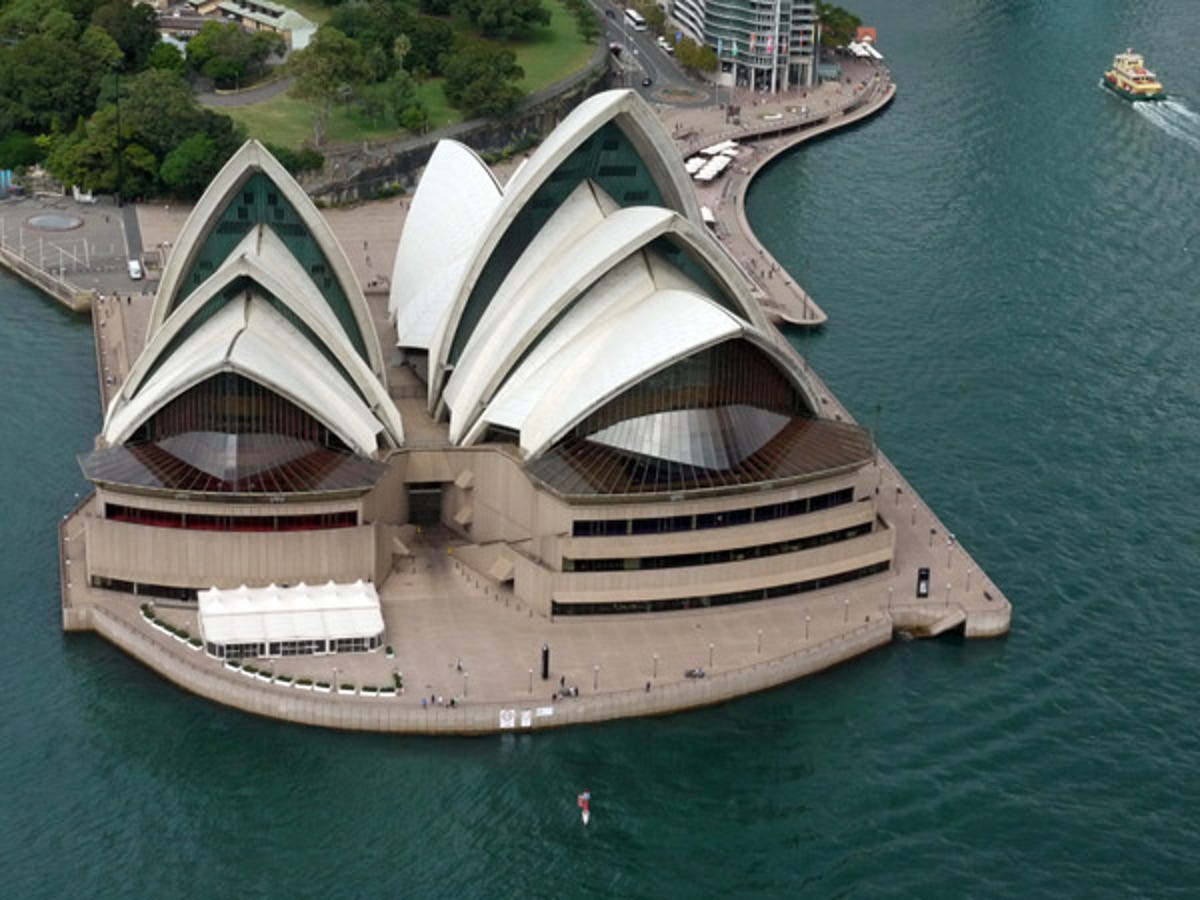
Gee whiz
Panasonic launched its new Micro Four Thirds cameras, the Lumix G2 and G10, in an airborne fashion. Here's what these cameras can do with just a helicopter and some local landmarks for backdrop.
All shots were taken on a pre-production Panasonic G2 or G10 with the supplied 14-42mm lens.
Both cameras will be available from June. This is the first time Panasonic has hit the sub-AU$1000 mark with its Micro Four Thirds range. The G10 comes in at AU$999 for a single-lens kit (14-42mm) or AU$1299 for a twin-lens kit (14-42mm and 45-200mm). The G2 is AU$1099 for body only, AU$1299 for the single-lens kit and AU$1599 for the twin-lens kit.
Pictured here is the Panasonic Lumix DMC-G10, the smaller and cheaper cousin of the G2. Both cameras feature a 12.1 megapixel Live MOS sensor and are compatible with Micro Four Thirds lenses. The G2 has a high resolution 1.44 million-dot electronic viewfinder (EVF), while the G10 has a 202,000 dot EVF. The G10 also loses out on the articulating LCD touchscreen found on its older relative.
Looks familiar? That's because both the G2 and G10 take their cues from the SLR-styled Lumix DMC-G1, the world's first Micro Four Thirds camera, rather than the compact GF1 from the same stable.
Up!
Here's one of the helicopters used to pit photographer against sky. It looks a tad dramatic, thanks to a new filter in the G2 called Silhouette.
In the pit
Riding shotgun meant we had a birds-eye view (pardon the pun) of the controls. Here's the pilot preparing for take-off.
1:1
The G1 used to have a few aspect ratios to choose from, but now the G2 has a 1:1 ratio that produces square images, ideal for emulating the feel of 6x6 120 film.
A mid-air jaunt
Photographers usually tell you to keep the horizon level in photographs, but where's the fun in following the rules all the time? Here, the helicopter takes a steep turn over Sydney's coathanger. Unfortunately, the weather was less than ideal, with clouds and rain hampering many a photographer's efforts.

Smooth sailing
The Sydney Opera House. We're wondering how they keep the roof so clean.
Shutter lag
Time for some arterial shots of Sydney's road network. Though the G2 was set on burst mode, it struggled to find focus and shoot in quick succession. Like most Micro Four Thirds cameras, the G2 has particularly pronounced shutter lag when capturing moving objects (or in this case, shooting from a moving object).
Smoked out
One of the other colour filters on the G2 is this Pop Art style, which saturates colours in an almost circus-like fashion. If you're familiar with the rest of the Panasonic range, you might compare it to the TZ10's aptly-termed Happy mode. This shot is over Wollongong's industrial area.
Touchy feely
A little island down the New South Wales coast proves to be a good testing ground for trying out the G2's touchscreen, from which you can select focus, change the exposure and fiddle with more shooting options than you can poke a stick at. For the less tactile-inclined folk, physical buttons remain in a similar configuration to the Lumix G1.
Articulated
Like the G1, the G2 has an articulating screen that pops out from the camera body and tilts around. Ideal for grabbing shots like this one if you need to stick bits of the camera out the window (not recommended).
Anyone for
Time to vino
Our final destination? The Crooked River vineyard in Gerringong, on the New South Wales south coast.
The G2's touchscreen allows you to tap on the screen to select the focus point. Sound familiar? It's a feature that has trickled down from mobile phones and other touchscreen cameras.
100 per cent crop
A 100 per cent crop of the previous photo, where we tapped to focus on the leaf. We were using a pre-production model of the G2 to take this shot, so the image quality may not reflect what the final production model is able to deliver. 1/200, f/7.1, ISO 100.
Up on the ladder
Photographer Ken Duncan (pictured left) was on hand to help out with shooting advice. One of his favourite tips is to change your perspective, as he is doing here by elevating himself on the ladder. Just goes to show that photographers will do pretty much anything to get that perfect shot.
2010 vintage
All washed out in sepia tones, this is another of the G2's filters.
Inside the cellar
Low light shooting is relatively pain-free on these cameras. Though the 14-42mm lens doesn't have a particularly wide maximum aperture, the image stabilisation (now located in the camera body rather than the lens) kicks in to help avoid blurry shots.
Panoramic portraits
Another Ken Duncan tip for photographers who like shooting panoramas: set the exposure manually so it doesn't shift from shot to shot and use manual focus. He also says to shoot in portrait orientation to give you the most to work with. This shot was stitched together from three images in Photoshop CS3 using the Photomerge option. The resulting file was over 181MB, so here's a smaller version.
HD video
The G2 now sports HD video recording (720p) in Panasonic's proprietary AVCHD Lite format. The shot above is a still from a video. Unfortunately the G2 only has a mono inbuilt microphone (unlike the GH1), but we give a big thumbs up to the external microphone port. Thumbs down to the fact that it's 2.5mm rather than 3.5mm, though. The G2 also has a dedicated video record button at the top of the camera, near the shutter button.

